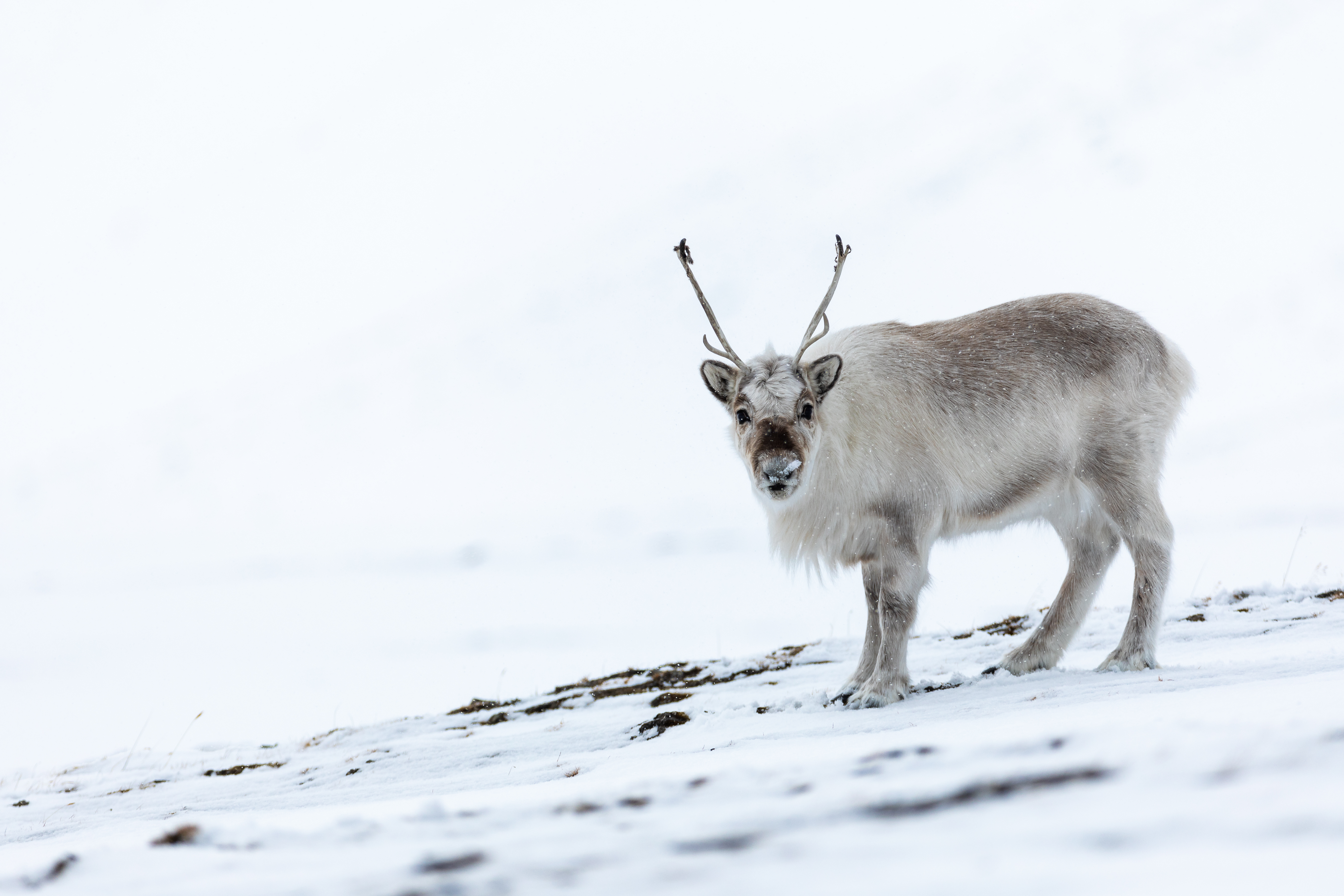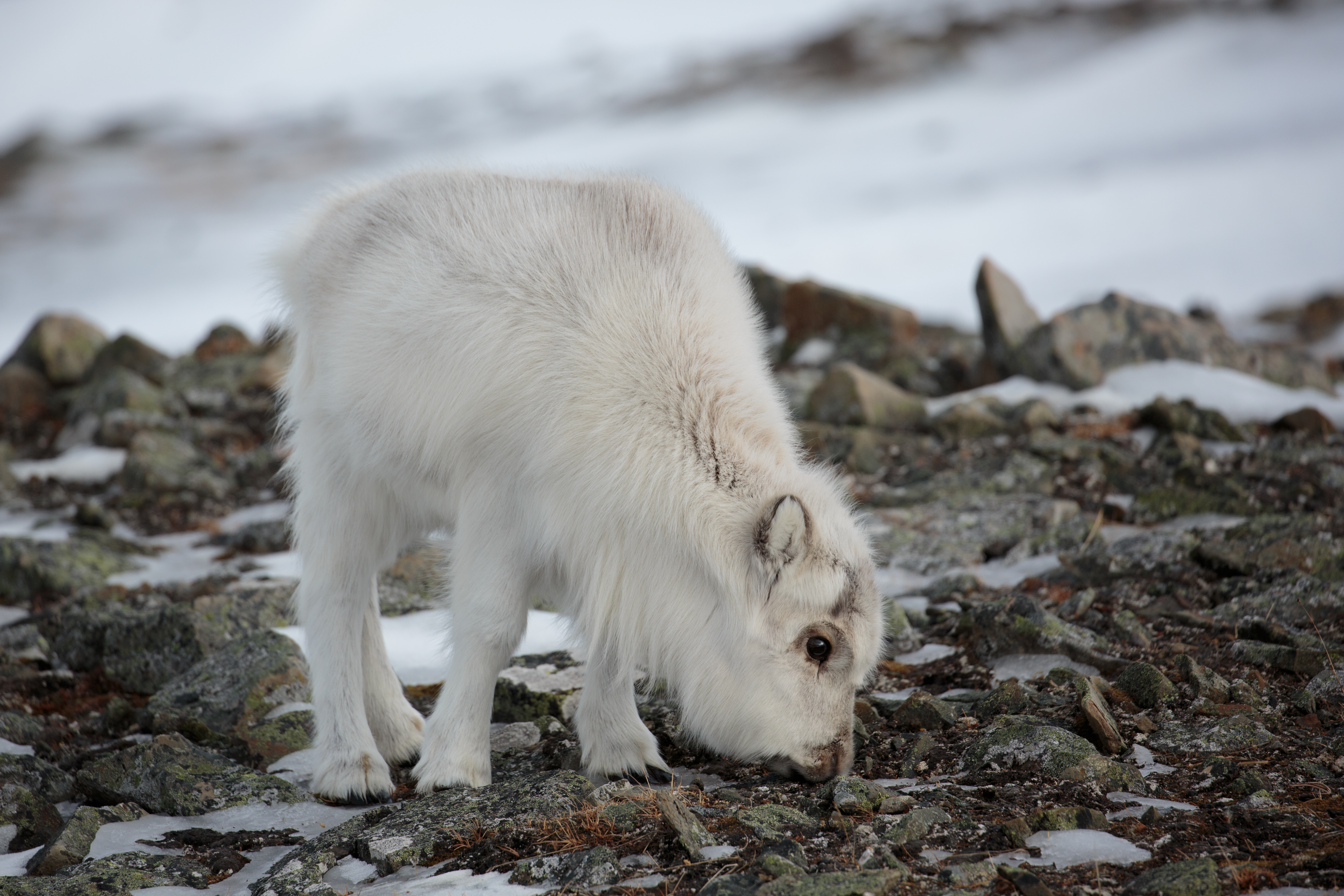After hearing that there was a particularly tiny type of reindeer, I RAN to the internet to find some photos – and were delightfully overjoyed by how cute and fluffy they were. Introducing the Svalbard Reindeer (Rangifer tarandus platyrhynchus), which are around 1.5-1.6 meters (4.9-5.2 feet) long.
What does the Svalbard Reindeer look like?
These cuties are wild, non-domesticated reindeer endemic to the Norwegian Svalbard archipelago in the Arctic Ocean. In winter, they look adorable with thick fluffy light grey or yellow-white fur. In the summer, they look darker, and their fur is less thick. These reindeer have short legs, and relatively small, rounded heads.

Svalbard reindeer in winter landscape.
Image credit: Risto Raunio/Shutterstock.com
Both males and females have glorious antlers. The males have larger antlers that grow between April and July, but they tend to drop them in early winter. The females grow their antlers in June and keep them for a year.
These reindeer do not live in large herds, but instead in small or single groups, typically of three to five individuals. An exception occurs in late autumn during the rut season, when males gather harems, and sometimes in winter when animals form larger groups in scarce good feeding grounds.
What do Svalbard Reindeer eat?
These small reindeer dine on vegetation. Food is often more scarce in winter, so the reindeer feed in areas where less snow has settled. In the summer, this vegetation is more abundant, and they spend a lot of their time munching away trying to regain their fat.

It’s just a baby!
Image credit: wim claes/Shutterstock.com
Is the Svalbard Reindeer in trouble?
These reindeer were nearly driven to extinction in the early 20th century from excessive hunting. However, the total population on the archipelago is double the population in 1989, now around 22,000.
A big risk factor for them is climate change, and there is the worry that the reindeer will starve. Since 1978, the population has been monitored by ecologists at the Norwegian Polar Institute. Population counts in 2019 indicated a decline in population and low body weight, along with the discovery of around 200 reindeer that starved to death. This was due to mild winters that led to heavier rainfall over the island, and the rainwater settled and became ice. This made it very difficult for the reindeer to eat.
On the other hand, it has been suggested that warmer temperatures might benefit the reindeer. Milder weather can boost plant growth and give the reindeer more time to build fat reserves. It could also shift their diet to include grasses that poke up through the ice and snow.
The Svalbard Reindeer might not have a glowing red nose like Rudolph, but they’re still stars of the Arctic tundra. These fluffy survivors have adapted to brave freezing winters and scrape out a living in some of the harshest conditions on Earth.
Source Link: The World’s Smallest Reindeer Are Fluffy Cutie Pies